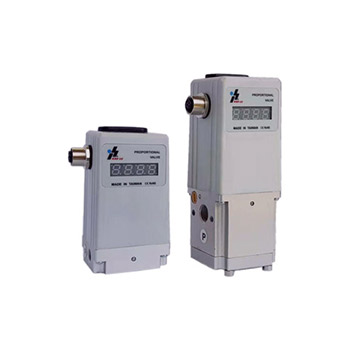It is used in residential and industrial applications to control the pressure of a liquid or gas. Basically, it converts a high inlet pressure to a desired lower regulated pressure and maintains a constant pressure. Meanwhile, they are used in a wide variety of applications around us. For instance, it is used to maintain the pressure in medical instruments, provide compressed air to industries, and control the fuel pressure in vehicles. So you can get the expected output. These are the improved versions of the manually operated regulators and have proven very effective at providing better control.

Digital Pressure Monitor
What They Do?
Digital pressure regulators sustain a constant output pressure to fulfill the needs of a pressurized system. If the incoming pressure is not stable and has fluctuations then these regulators bear the fluctuations and provide a constant pressure to the system. When you use an electric pressure regulator, then you will have the option to set the output pressure with the help of the control signal. In the regulator an inner transducer generates a true closed-loop and provides a feedback voltage of the output pressure. With the help of this feedback signal, the controller can see what adjustments are required to maintain the desired pressure. In this way, he can make the right adjustments to improve pressure regulation.
Benefits of Electronic Pressure Regulator:
Below we have listed some benefits of the Pressure Regulators:
Reduces the Workload:
In the past, the workers had to maintain the outlet pressure of the liquid, gas, or air manually. At that time, workers use manual measures to fix pressure direction problems and maintain the right pressure. Nowadays, you don’t have to do that manually because there are several electro pneumatic pressure regulators available to help you out. With their help, you can easily control the pressure by just sending a signal to the regulator. In this way, you can save time and effort and reduce the risk of human error.
Communication and Control Technology:
Most of the electronic pressure regulators utilize two valves, one inlet valve to add the pressure to the volume and the second for the exhaust pressure. The control sensor tells what has to be done to maintain the desired pressure. This communication is done between the regulator and the controller. Several protocols can be used to communicate the settings of the pressure, such as analog or digital. The first electronic pressure control was an analog device.
Save Energy:
Electronic pressure regulators save energy as they use static voltage in a closed vessel. There are also many dynamic applications. It contains a changeable inlet pressure, set point, volume, leakage, and back pressure. This is a difficult thing to find out: the set of PID settings that allow the control pressure regulator to behave normally in dynamic situations. If you can’t find the settings, don’t worry; you can do that with the help of the gain scheduling process. In this process, the microcontroller chooses an alternate PID value from a predefined menu in real time. Consequently, it can achieve greater stability and repeatability in various operating situations.
Final Thoughts:
Maintaining constant pressure is not a big deal. For this, get the assistance of a perfect electronic pressure regulator that lets you maintain the specific pressure in a system effortlessly. They are very beneficial in manufacturing industries if you know the correct way to use them. Nowadays, many types of pressure regulators are available on the market, from which you can choose wisely according to your residential or industrial use.